Some projects I do are directly related to a specific industry related problem. Others are more of the ‘I wonder if if is possible?’ type. Todays post is one of the latter ones. Lenses specifically designed for UV photography such as the Rayfact 105mm UV, Asahi 85mm Ultra Achromatic Takumar, and 60mm Coastal Optics f4, are all manual lenses. This is fine for most applications, but something I have always wondered about is whether it would be possible to make an autofocus UV lens? The end result was compact lens using a Nikon autofocus lens body and a 79mm Thorlabs aspheric UV fused silica element, and this is how I went about it.
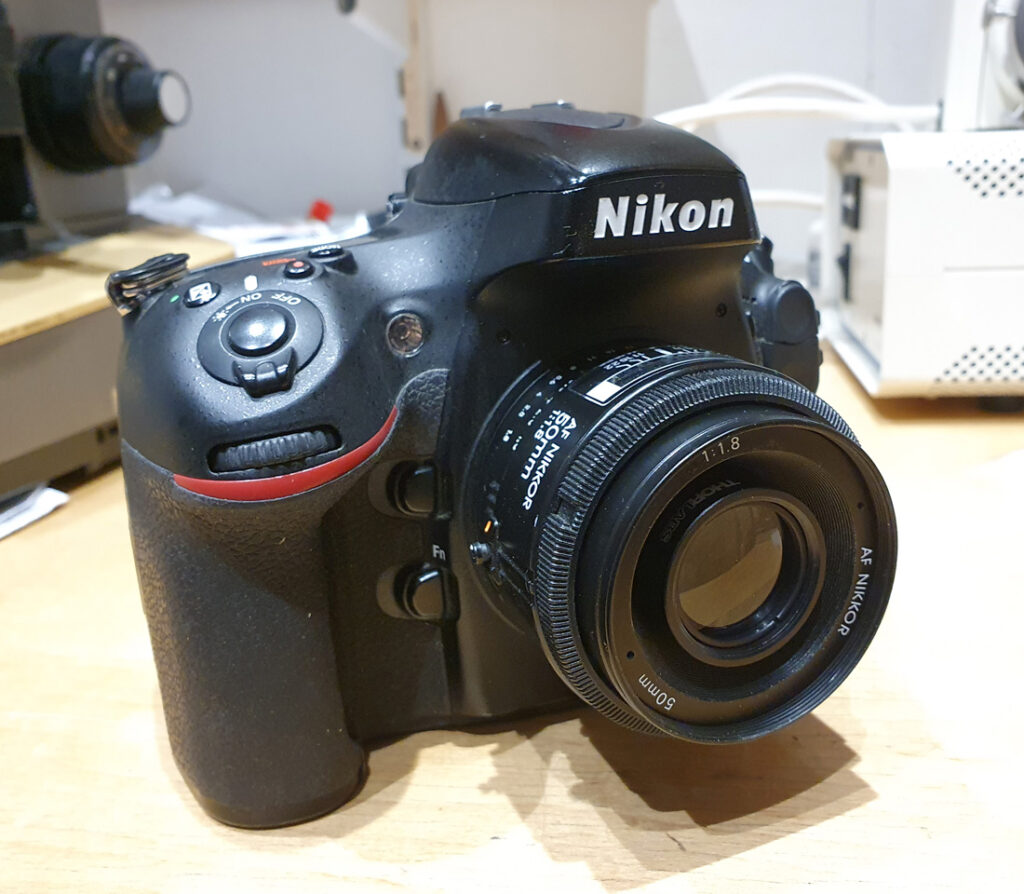
A few weeks ago, a post on the Ultraviolet Photography forum described how someone had taken a Canon EOS 50mm f1.8 lens apart and installed a 75mm plano convex lens in place. The result was an autofocus setup able to be used on Canon cameras. Readily this spurred me on, and I decided to try and do one myself. I wanted to use a Nikon lens body, as they have mechanical aperture dials, and I can use them on my Canon, Nikon and Sony cameras with the adapters I have. I sourced a Nikon 50mm f1.8 AF lens from a charity shop and set about taking it to bits to remove the original lens elements. This was relatively simple, and I managed to get the glass elements out without damaging them.
The Nikon 50mm f1.8 AF lens is a 6 element 5 group construction with one cemented group. It’s not multicoated according to Ken Rockwell – https://www.kenrockwell.com/nikon/5018daf.htm
This is the lens design, again from Ken’s page linked above. I’ve added in 1-6 in red for the elements.

Lens elements removed, I got the following.
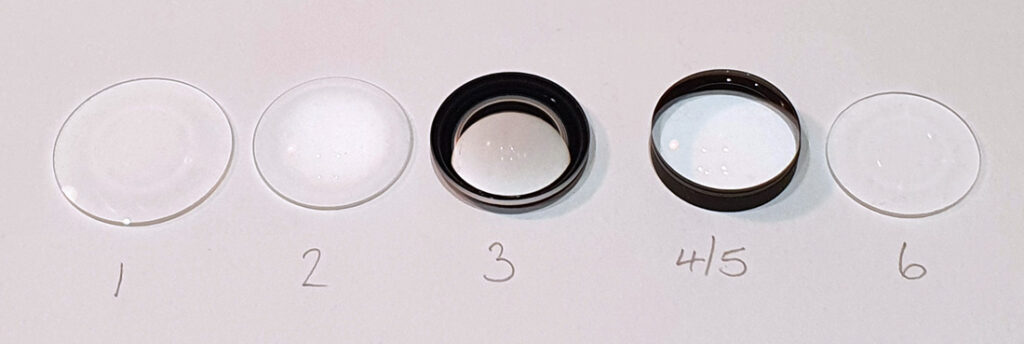
As these came out without damage, I thought it’d be nice to measure their transmission and see what that looked like. This is what I got.

Note, I’ve included a ‘Theoretical’ line in the graph as well, which would be all the elements combined. Unfortunately I was so excited when it arrived that I took it apart before measuring the transmission of the lens, so don’t have an ‘unmodified’ lens graph to compare against. Bad scientist…..
The cemented doublet seems to be the one restricting the transmission the most (as expected). What surprised me though was element 6 (the rear element). This is a plano convex lens with a focal length of about 65mm, and it has a really deep UV transmission unlike the 3 single elements at the front of the lens. I wonder what glass they used for that?
Once the glass was out, I was left with and empty lens body, so I decided to glue in a Thorlabs SM1 tube to the body to act as a mounting point for lenses. This was pretty much a perfect fit, and required very little work to install.
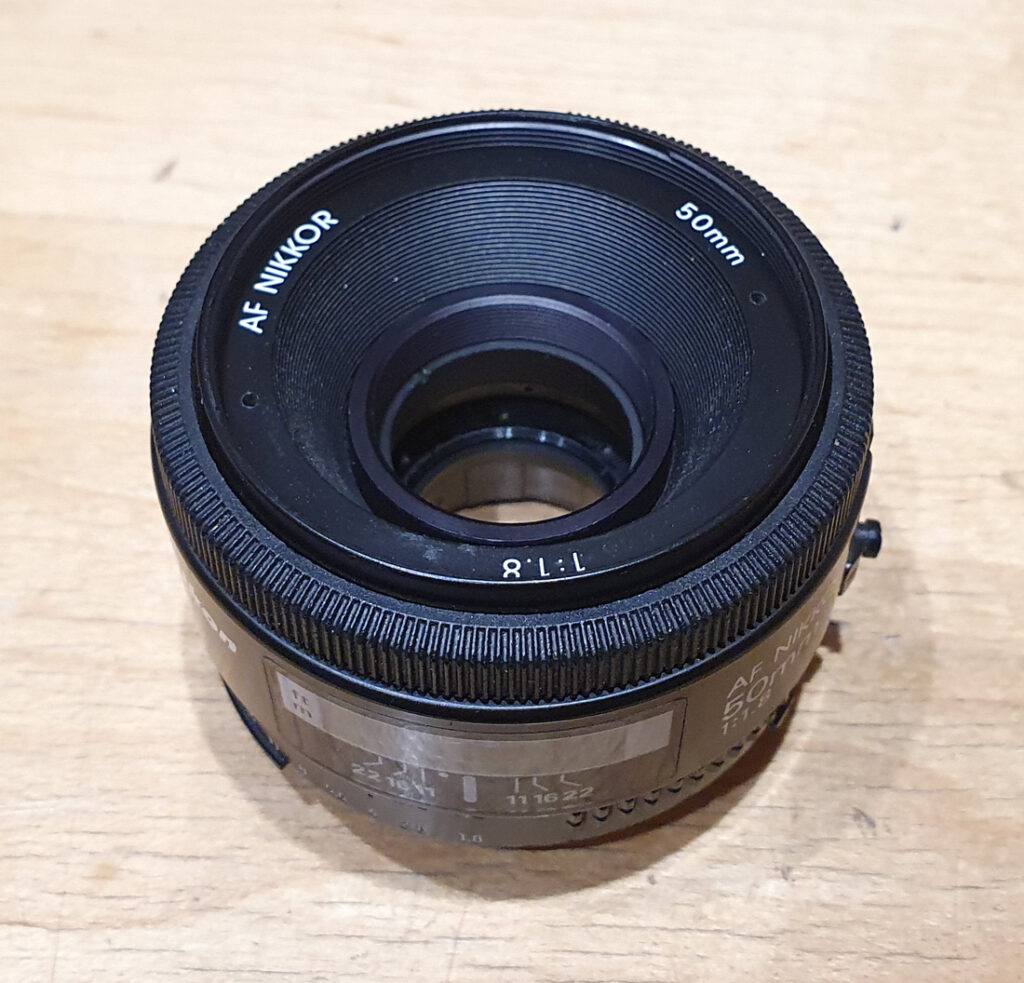
I decided I wanted to use my Thorlabs 79mm aspheric UV fused silica lens for this build, and with it screwed in place, in visible light, the lens was able to focus from infinity down to just over a meter. Even better, the autofocus function on my Nikon d800 worked, and the lens did indeed autofocus properly. I can adjust the aperture from the camera, or mechanically on the lens, and I can focus either manually or from the camera. Yay.
Now it should be noted that wide open it is certainly not sharp at the edges of the image, which is to be expected. Also, wide open the contrast is soft, and very prone to flare, so a lens hood is essential.
Does it work in the UV? Interestingly, in the UV when using a Baader U filter, the lens no longer focuses to infinity. In hindsight that isn’t a huge surprise, and I’d expect it to be more of an issue the further into the UV I go with it. It does however still focus with more close up subjects. This was a picture of the trunks of cherry trees in my garden, taken in the UV with the Baader U filter and Nikon d800 camera.
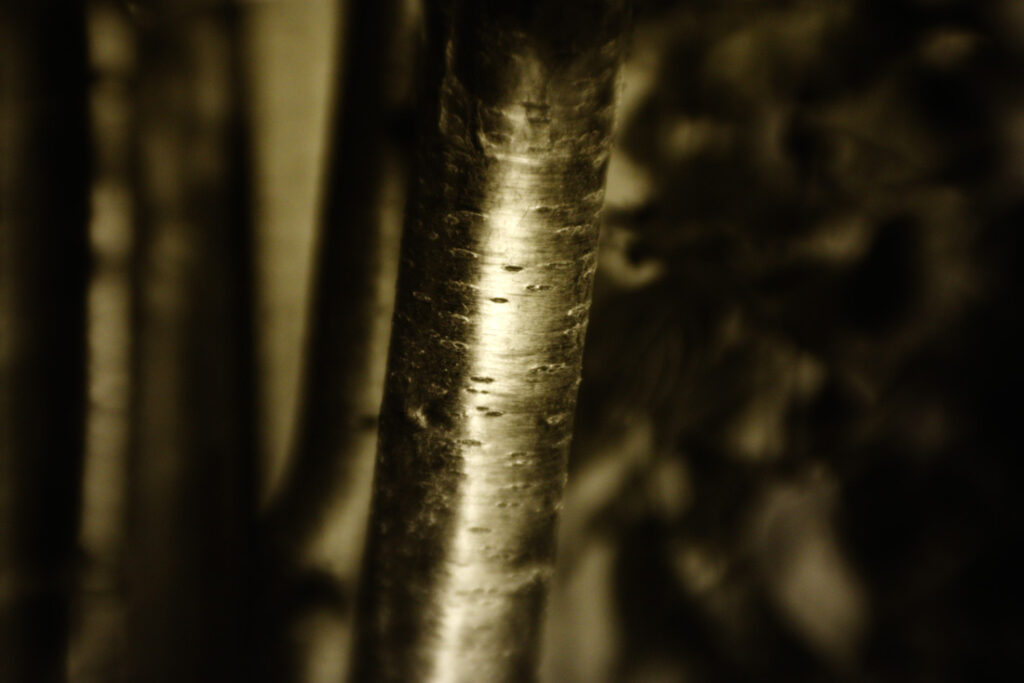
The lens will certainly autofocus in the UV (if there is sufficient UV for it to do so). It’ll be interesting to see if this still works even as far into the UV as 254nm.
The good thing about using the Thorlabs SM1 tube means that mounting other lenses becomes quite simple if I want to try them out. For instance this is a rather more chunky OptoSigma80mm excimer lens which is triplet construction. This does fit (as shown below), and the focus system still works despite it being much heavier. In theory this should offer better correction than the single Thorlabs aspheric lens, but that remains to be tested.
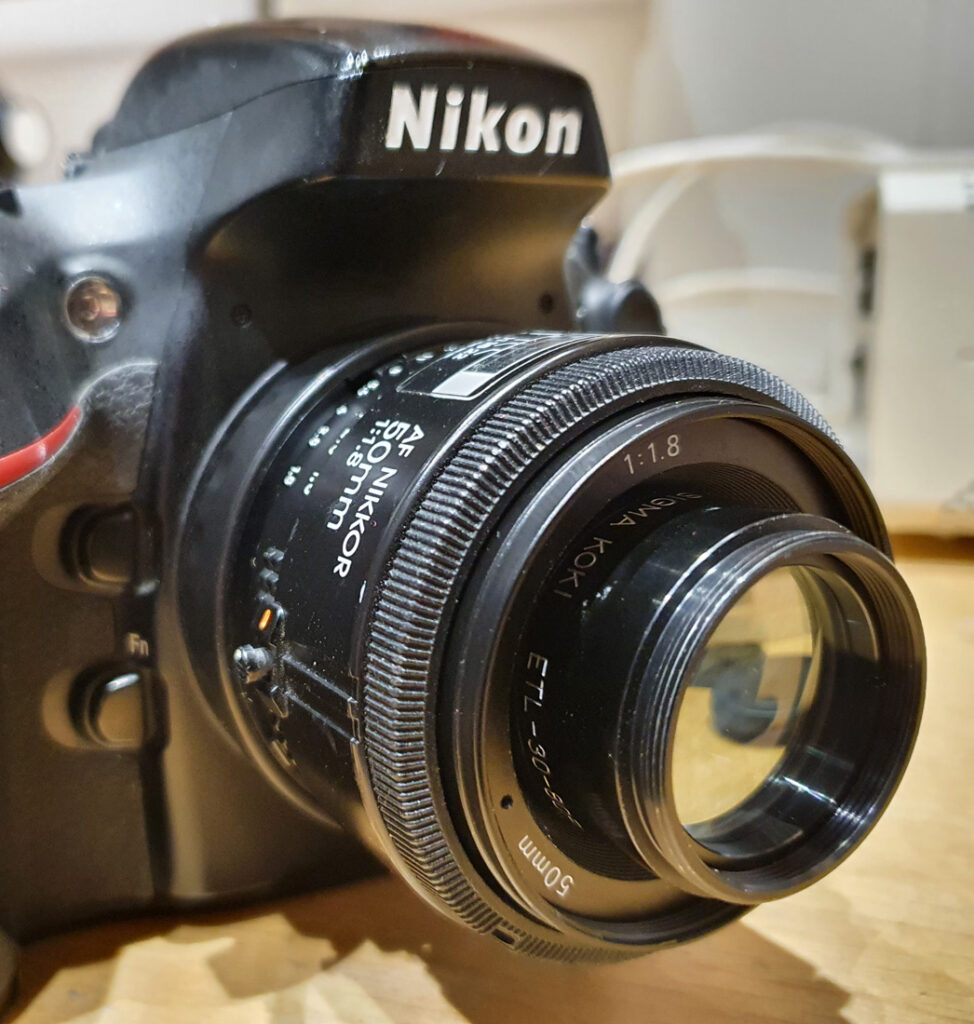
This was a fun little build, and the result is a very compact UV capable autofocus lens which I can use on a variety of camera bodies (although it will be autofocus only on my Nikons). Will it change how I do my imaging work? I doubt it, but I got to learn about how lenses work, and it showed that it was indeed possible to use existing camera lens bodies to carry new and interesting optical elements. I also got to learn a bit more about the optical properties of the glasses used in commercial camera lenses. Thanks for reading, and if you’d like to know more about this or any other aspect of my work, I can be reached here.
